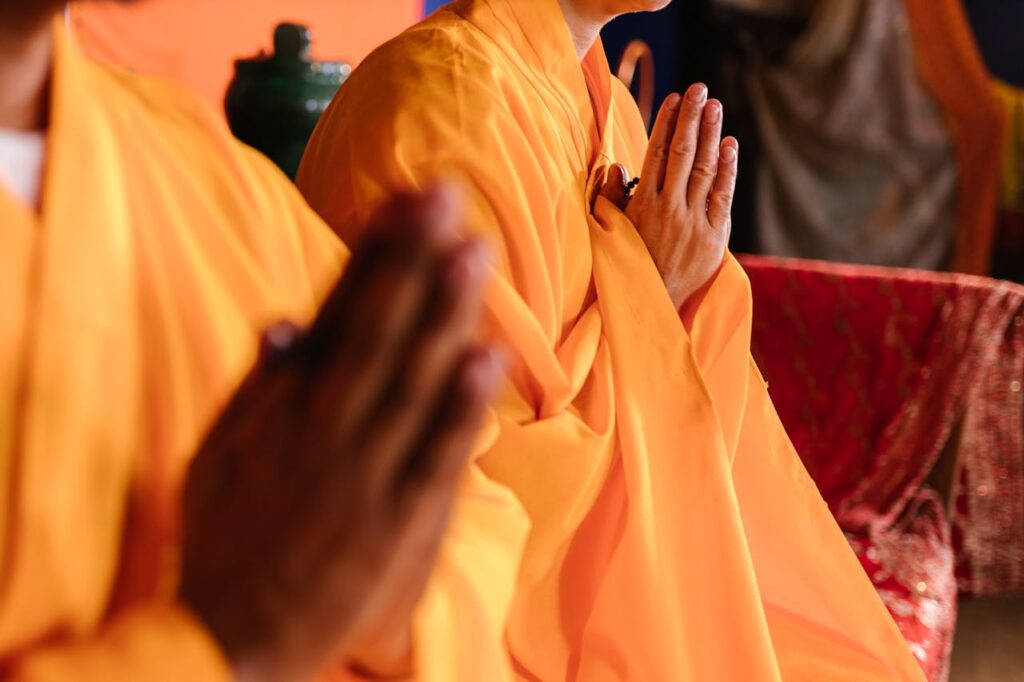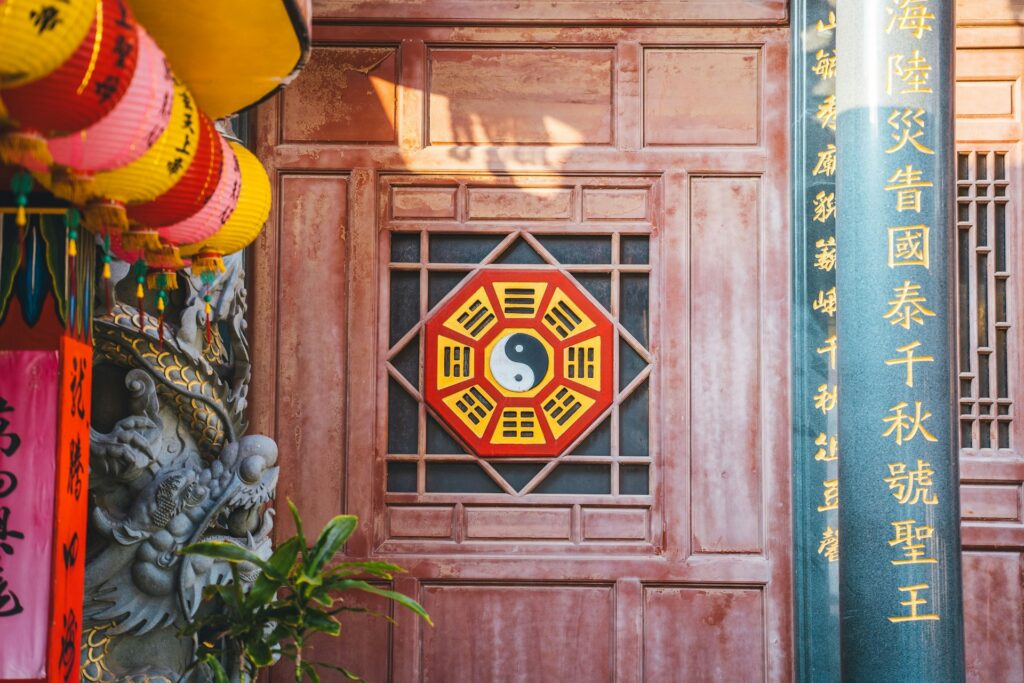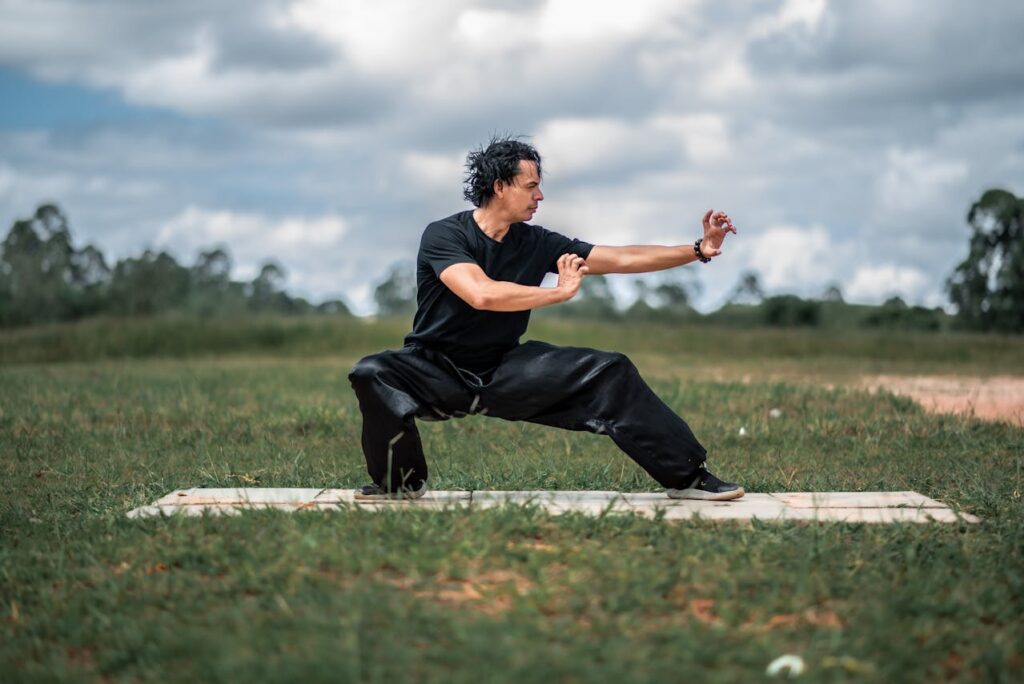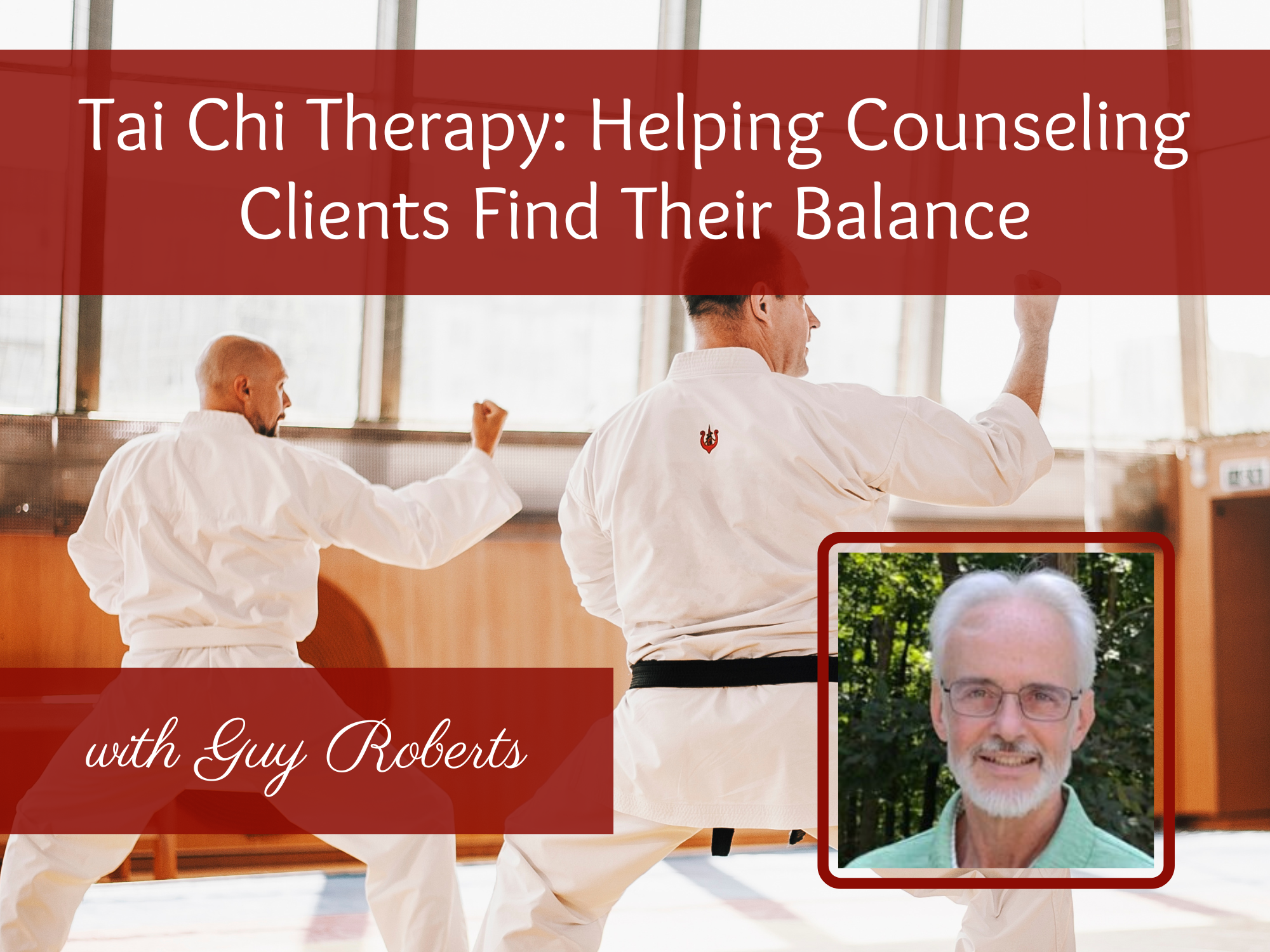For many people who face mental health challenges, traditional “talk” counseling yields meaningful reduction in unwanted symptoms and improvements in well-being. But for some, participating in complementary forms of therapy can enhance the benefits of counseling. One such option is tai chi therapy, a practice that integrates mindful movement and breathwork to bring calm, clarity and resilience to mind and body.
Kenosis Counseling Center is blessed to partner with Guy Roberts, a retired Catholic priest and pastoral counselor, who also offers tai chi therapy to our clients. Guy’s approach to tai chi therapy combines decades of spiritual and martial arts training to create an experience that supports emotional healing, mental well-being, and spiritual growth.
In this blog, we’ll introduce you to the core concepts of tai chi therapy for mental health. You’ll learn more about Guy’s background and expertise, what makes tai chi therapy so powerful, and what you can expect if you decide to try this unique and enriching practice as part of counseling.

Guy’s Tai Chi Journey
Guy Roberts brings a special combination of spirituality and martial arts study to his work as a tai chi therapist.
Before becoming a certified tai chi instructor, Guy served as a priest in the Catholic church for over 25 years. “Having been a priest for so many years, I didn’t have a family and children to take on vacations,” he says. “So at least once a year, I would take a bit of vacation time and go and study tai chi.”
Guy had practiced Taekwondo, a Korean form of karate, since he was a child. But over time, his curiosity shifted in a new direction. He was drawn to the inward-focused practices of tai chi, which go beyond muscular strength and emphasize the integration of mind, body, and spirit. “I was really interested in learning about the esoteric interior or internal martial arts that we find primarily among the Chinese martial arts,” Guy says.
His pursuit took him first to Florida, where he studied with a tai chi master and was introduced to Qigong, a form of breath and energy work closely associated with tai chi. Yet after a year of study with this master, Guy wanted to go even deeper. “I realized I needed more than he was able to offer, so the next year I went to China and spent a month learning with the Shaolin monks.”
At the Shaolin monastery, Guy spent eight hours a day with the monks, gaining invaluable firsthand experience with the legendary tai chi practitioners. Upon returning to the U.S., he continued his study with Chinese master Jesse Tsao, a renowned teacher who has dedicated decades to sharing tai chi for health and healing. Today, Guy is listed on Tsao’s website Tai Chi Healthways as a certified instructor.
As Guy tells it, tai chi is much more than just a physical practice. “It’s very much a system of continual, positive, personal transformation,” he explains. “For me, the idea of a martial art that is not just about the martial—the warfare aspect—but about the purification of the individual, is very appealing. Because the way my teacher and his teacher have taught this is: your greatest opponent is yourself, and your negative thinking.”

Why Tai Chi Therapy?
When practiced to its full, tai chi teaches radical acceptance and radical adaptability, which can be transformative for challenges like anxiety, depression, trauma, and life stressors. Guy explains, “Tai Chi’s basic principle is that movement comes out of stillness, and the stillness of the mind first.” In other words, tai chi helps people cultivate inner calm before moving forward in life with clarity and purpose.
A key concept in tai chi is wuji, a state of harmony represented by an empty circle. From this state of stillness, movement and change arise naturally. In practice, this means that before acting or reacting, we return to a centered, peaceful state where we can observe our thoughts, emotions, and sensations without judgment.
Guy describes this beautifully: “We sit quietly and begin to look at our thoughts and recognize, ‘OK, the passing thoughts are just thoughts.’ There’s an examination of the body, the breathing. We can breathe deeply, which triggers the nervous system to say, ‘Oh, I’m not in danger, I can relax.’ And we begin to experience the moment, and we examine emotions and realize that emotions are just movements, and there’s someone who is experiencing these things.”
The philosophical heart of tai chi comes from the Taoist principle of “going with” life’s experiences, rather than struggling fruitlessly against them. In mental health terms, this is closely related to acceptance. “When we have that sensation of going against someone or something, even if it’s our own thoughts, then that can create more anxiety,” Guy says. “Instead, we want that radical acceptance of, ‘This is what is. It’s workable. As long as I allow it to flow, it’s going to flow in a way that’s positive.’ “
Another powerful mental health benefit of tai chi therapy is the development of intention (yi). As Guy explains, this is not about forcing change through willpower, but about cultivating a heartfelt desire: “What do I want to accomplish? It’s more of an intention from the heart. It’s more of a willing instead of a thinking.” Developing intention can help clients focus their energy on things that truly matter to them, rather than on confused and counterproductive behaviors.
Finally, tai chi is wonderful for strengthening mindfulness. By paying attention to the body, breath, and present moment, practitioners learn to ground themselves in the here and now. Guy often reframes the tai chi concept of “grounding” as “connectedness” to make it more accessible, helping clients feel like part of the world around them rather than isolated or detached from it.
He says, “I’ve seen so much in counseling that people feel like they’re on the outside looking in, trying to find their place within this whole tapestry of creation. But they’re already part of it. So let’s begin to just be where we are at this moment and feel a sense of connectedness to it.”

How Guy Does Tai Chi Therapy with Clients
If you’re wondering what tai chi therapy sessions with Guy look like, rest assured they are neither complicated nor intimidating. Sessions often begin with quiet sitting or standing meditations, allowing clients to become aware of their thoughts, emotions, and bodily sensations. Guy then guides clients through simple, flowing movements, always adapted to their comfort level.
“I would say tai chi is already going on in your body right now,” Guy remarks. “Every atom in your body is doing tai chi. It’s only in our minds that we’re not doing it.” This perspective invites clients to relax into the process without overthinking it.
“Being Westerners, we always come with lots of questions. They want to know the philosophy, and they want to try to figure it out,” Guy says. But he has found that even clients with no previous experience often find themselves embracing the practice quickly. “When we actually start doing the exercise, I usually will tell them, ‘Let me explain a little bit, and then let’s just go through it, and you’ll experience it.’ It’s very much an experiential thing. I’ve noticed that most people, once they start engaging in these exercises, they will just say, ‘OK, my questions are getting answered.’ They participate readily.”
Guy has seen firsthand how tai chi therapy can help people release tension and experience safety in the present. Whether working with individuals or groups, he finds that basic movements and mindful breathing can release tension, ease anxiety, and calm the nervous system. “They begin to feel they’re in a safe place, and they begin to process more of what it is to be in the moment,” he says.

